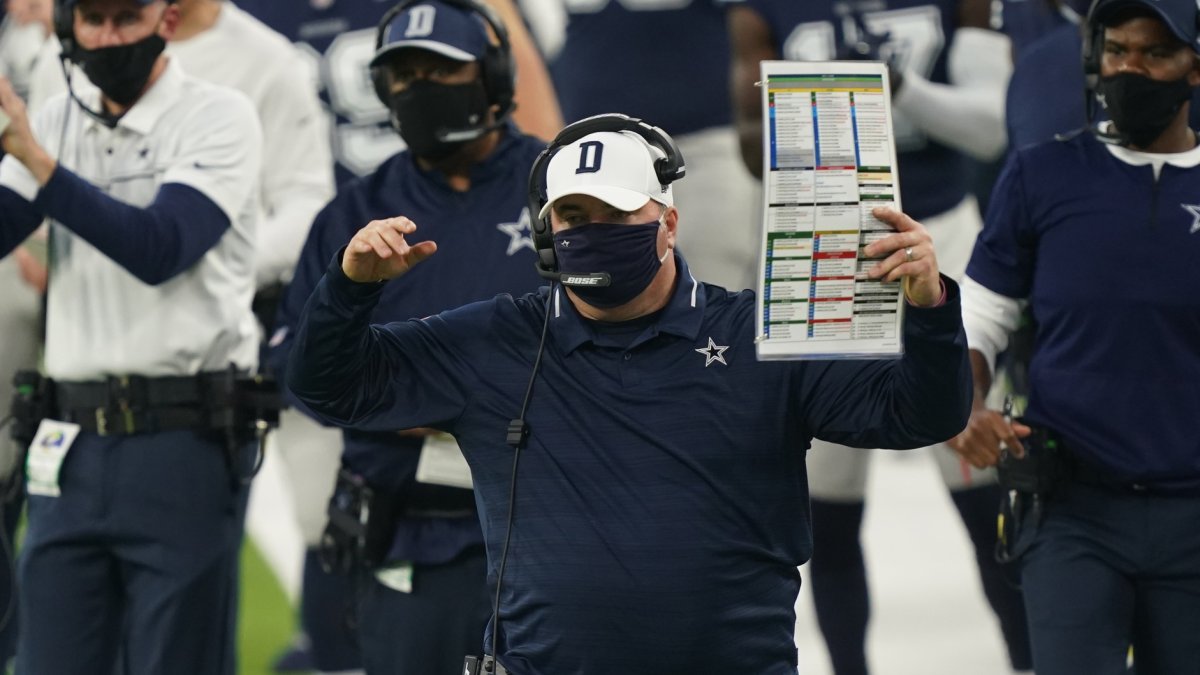Last Sunday, the 1 p.m. window presented us with a memorable NFC clash between the Dallas Cowboys and the Atlanta Falcons. As you may recall, the Cowboys trailed by 19 points at halftime but went on to score four touchdowns in the second half; they came away with a much-needed onside-kick recovery after the last touchdown and kicked a field goal to win the game.
This was not only an awesome game to watch — if you weren't a Falcons fan, that is — but it also boasted a few compelling storylines:
- Calvin Ridley is about to have a huge breakout year? Awesome.
- Dak Prescott puts his team on his back after a very unlucky start and passes for 9.6 yards per attempt while taking only one sack behind a depleted offensive line when the opponent knows he has to throw all game? Awesome.
- CeeDee Lamb is already producing in his rookie year? Awesome.
- The Falcons blow another huge lead? Awesome (if you are a Bucs fan).
- The execution of an onside kick that somehow tricked the entire Falcons' hands team into assuming they shouldn't just fall on it? Awesome.
- Mike McCarthy is going for two after scoring a touchdown that cut the Falcons' lead to 9 …
Well, the latter is something we shouldn't even be talking about. Yes, it's the right thing to do, but it doesn't magically improve your team's winning probability by a lot.
There has been a lot of discussion about the decision this week, with ESPN's Brian Burke explaining why it was the right decision and NBC's Mike Florio arguing for the opposite, saying “it made no sense” to go for two in this scenario.
Before I discuss the scenario in a more detailed way, I want to go through other scenarios to discuss common misconceptions and to explain the kind of thought process and the methods that go into post-touchdown decision-making.
First of all, all of these have long been solved with a simple approach from Benjamin Morris. When the point differential after the touchdown is X points, the question is whether you rather made it X+1 (with almost certainty) or whether you want the opportunity to make it X+2 with the downside of staying put at X. All that matters to the final decision are two numbers.
- What is the gain in win probability when going from X to X+1?
- What is the gain in win probability when going from X+1 to X+2?
One weighs these numbers with the chance to convert a 2-point attempt (and, technically, also the chance of successfully kicking a PAT), and the decision goes as follows:
If the first number is higher, you kick the point after the touchdown.
If the second number is higher, you go for 2.
Instead of just calculating these numbers, I want to take some examples for X. Instead of computing that one option is better than the other, I will demonstrate why that's the case and explain the thought process behind it.
Exclusive content for premium subscribers

WANT TO KEEP READING?
Dominate Fantasy Football & Betting with AI-Powered Data & Tools Trusted By All 32 Teams
Already have a subscription? Log in



 © 2025 PFF - all rights reserved.
© 2025 PFF - all rights reserved.